In each situation of column-I, a system involving two bodies is given. All strings and pulleys are light and friction is absent everywhere. Initially each body of every system is at rest. Consider the system in all situation of column I from rest till any collision occurs. Then match the statements in column - I with the corresponding results in column - II
 Solution in Gujrati
Solution in Gujrati
The correct Answer is:(A) → q; (B) → p, q; (C ) r; (D) → s
(A) Net force on block m acts in downward direction
∴ Acceleration of centre of mass is in downward direction.
(B) Net force acts in downward as well as in horizontal direction.
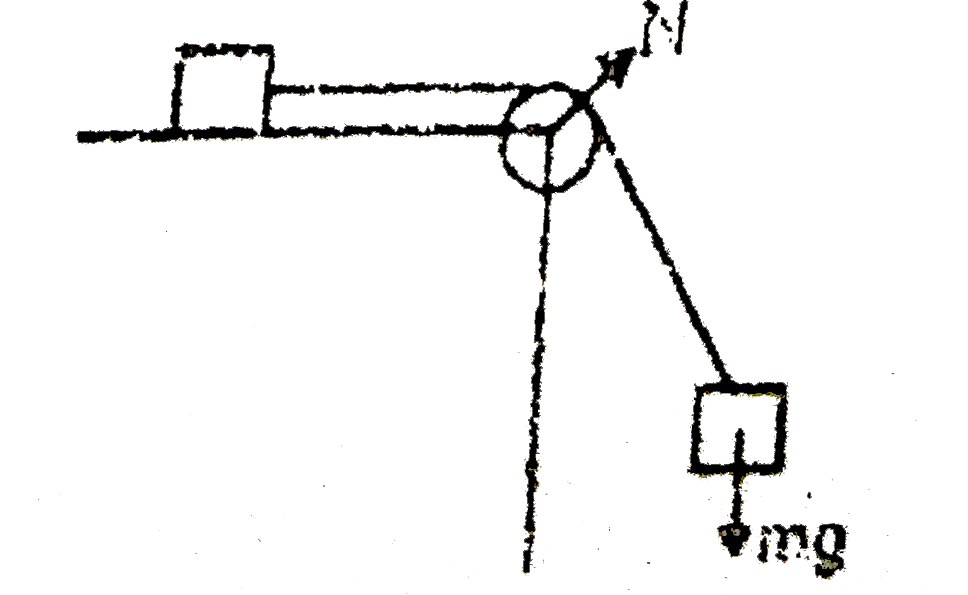
∴acm moves both in horizontal & vertical direction.
(C ) As the mass of monkey & block is same both moves upward.
∴ Centre of mass moves upward
(D) Centre of mass of the system does not moves
Topper's Solved these Questions
- CENTRE OF MASSBOOK - ALLEN CHAPTER - CENTRE OF MASSEXERCISE - EXERCISE-IV A
32 Videos
- CENTRE OF MASSBOOK - ALLEN CHAPTER - CENTRE OF MASSEXERCISE - EXERCISE-IV B
14 Videos
- CENTRE OF MASSBOOK - ALLEN CHAPTER - CENTRE OF MASSEXERCISE - EXERCISE-II
43 Videos
- BASIC MATHEMATICS USED IN PHYSICS &VECTORS BOOK - ALLEN CHAPTER - BASIC MATHEMATICS USED IN PHYSICS &VECTORS EXERCISE - EXERCISE-IV ASSERTION & REASON
11 Videos
- ELASTICITY, SURFACE TENSION AND FLUID MECHANICSBOOK - ALLEN CHAPTER - ELASTICITY, SURFACE TENSION AND FLUID MECHANICSEXERCISE - Exercise 5 B (Integer Type Questions)
3 Videos
Similar Questions
Fig. shown a uniform square plate from identical squares at the corners can be removed. (a) Where is the centre of mass of the plate originally ? (b) Where is it after square 1 is removed ?
(c ) where is it after squares 1 and 2 are removed ? (d) Where is c.m after squares 1,2,3, are removed ?
(f) Where is c.m after all the four squares are removed ? Answer in terms of quadrants and axes.

View SolutionA bullet of mass M is fired with a velocity 50m/s at an angle with the horizontal. At the highest point of its trajectory, it collides head-on with a bob of mass 3M suspended by a massless string of length 10/3 metres and gets embeded in the bob. After the collision, the string moves through an angle of 120∘. Find
(i) the angle θ,
(ii) the vertical and horizontal coordinates of the initial position of the bob with respect to the point of firing of the bullet. Take g=10m/s2
View SolutionTwo particle A and B start moving due to their mutual interaction only. If at any tiem 't', →aA and →aB are their respective accelerations, →vA and →vB are their respective velocities, and upto that time WA and WB are the work done on A and B respectively by the mutual force, mA and mB are their masses respectively, then which of the following is alwys correct.
View SolutionAssertion: If the initial and final positions coincide, the displacement is a null vector.
Reason: A physical quantity can not be called a vector, if its magnitude is zero.
View SolutionTwo soap bubbles A and B are kept in a closed chamber where the air is maintained at pressure 8N/m2.The radii of bubbles A and B are 2cm and 4cm, respectively. Surface tension of the soap-water used to make bubbles is 0.04N/m. Find tha ratio nB/nA, where nA and nB are the number of moles of air in bubbles A and B, respectively. [Neglect the effect of gravity.]
View SolutionIn each situation of column-I, some charge distributions are given with all details explained. In column -II The electrostatic potential energy and its nature is given situation in column -II. Match the proper entries from column-2 to column-1 using the codes given below the columns, Column-I
View Solution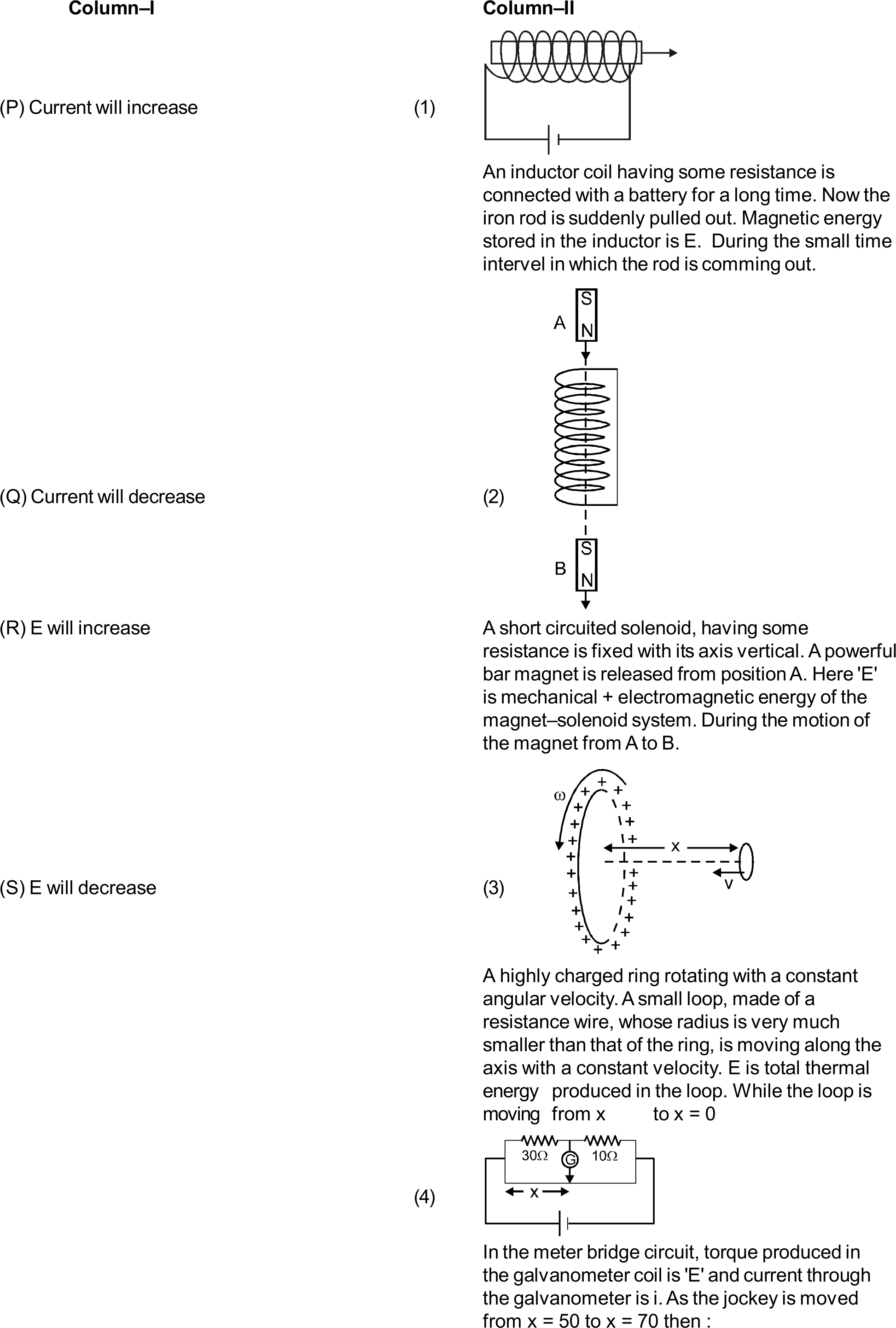
In columns-II some situations are gien and in column-I some results are given. Match the column according to the correct results.
View SolutionIn each situation of column-I, a system involving two bodies is given. All strings and pulleys are light and friction is absent everywhere. Initially each body of every system is at rest. Consider the system in all situation of column I from rest till any collision occurs. Then match the statements in column - I with the corresponding results in column - II
View SolutionIn each situation of column I a mass distribution is given and information regarding x and y-coordinate of centre of mass is given in column II . Match the figures in column I with corresponding information of centre of mass in column II
View SolutionIn column-I some situations have been described and in column-II corresponding graph is given. Match the entries in column-I with appropriate entries in column-II.
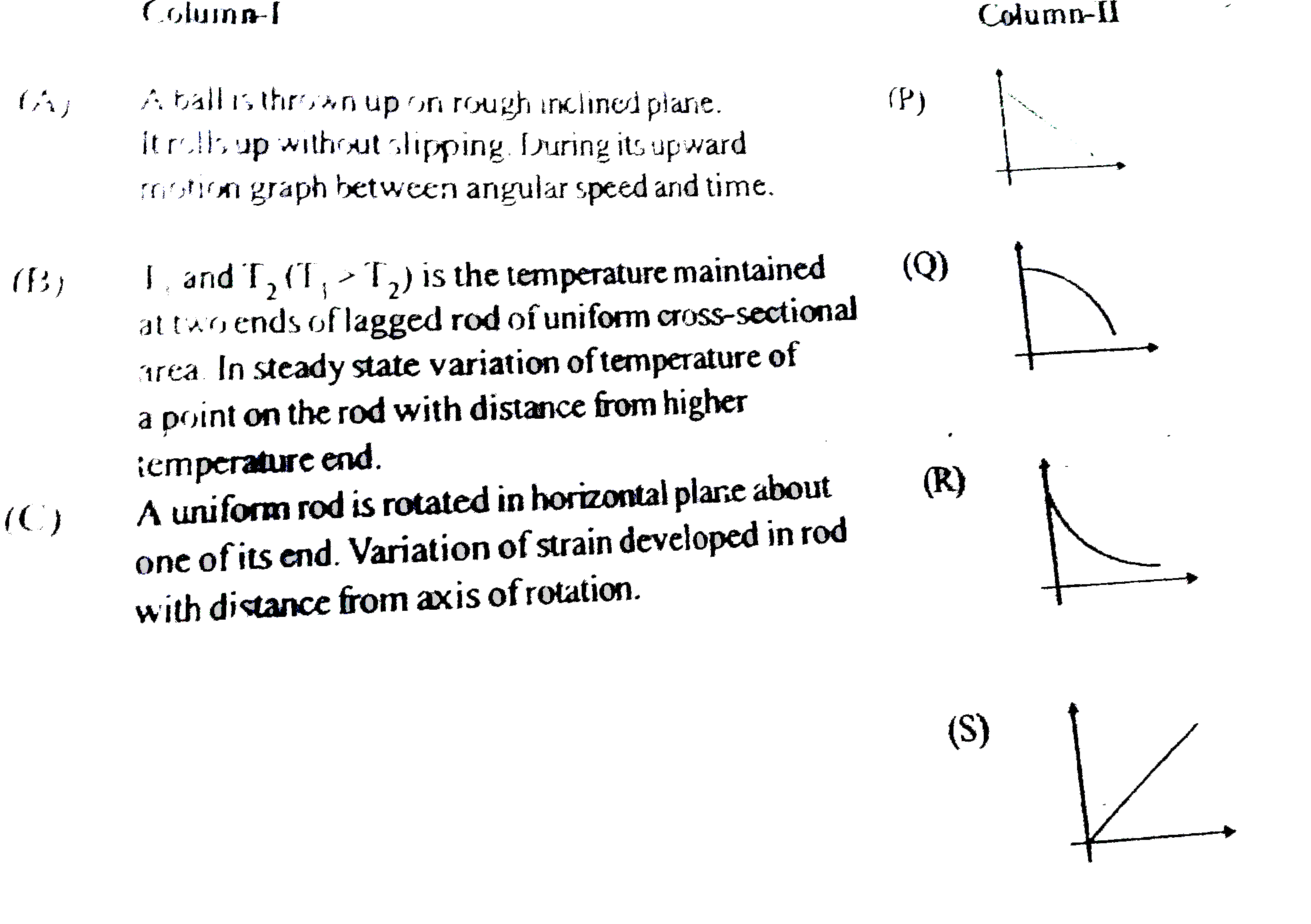
View SolutionIn each situation of column-I a process A rightarrow B rightarrow C is given for an ideal gas. Match each situation of column-I with correct result in column II
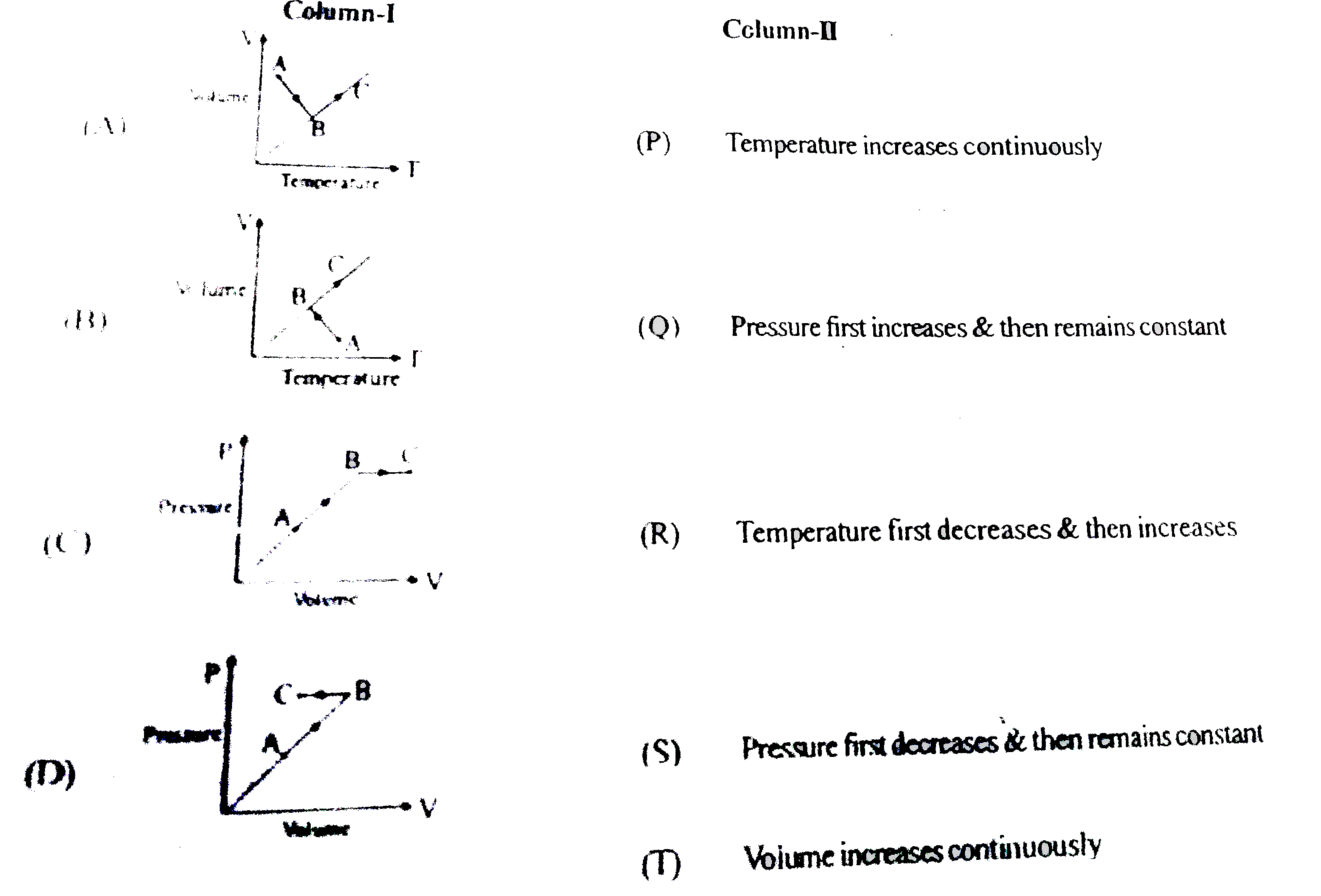
View SolutionMatch the crystal system in Column-I with unit cell dimensions in Column-II:
View SolutionColumn II gives certain systems undergoing a process. Column I suggests changes in some of the parameters realated to the system. Match the statement in Column I to be appropriate process(es) from column II.
View SolutionIn the Column I, a system is described in each option and corresponding time period is given in the column – II, Suitably match them.
View Solutionस्तम्भ I में दो तार, जिनमें से प्रत्येक में एक अचर धारा बह रही है, चार अवस्थाओं में रखे दिखाए गए हैं। इन धाराओं से होने वाले कुछ प्रभावों के वर्णन स्तम्भ II में किये गये हैं। स्तम्भ I में दिये गये वक्तव्यों का स्तम्भ II में दिये गये वक्तव्यों से सुमेल कराएँ।
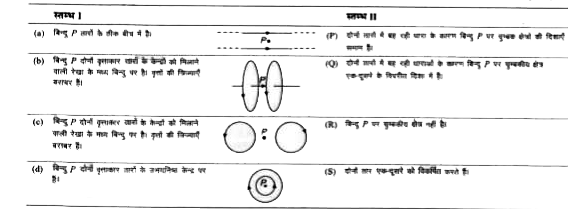
View SolutionMatch the type of colloidal system (column I) with its example (column II)
View Solution
